Hosta species and varieties
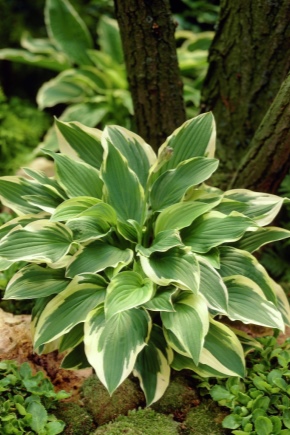
Today, gardeners and florists grow a huge number of perennial horticultural crops. Among the variety available, it is worth highlighting the host, represented by various species and varieties that have a high decorative value when decorating private gardens and landscaping urban landscapes.
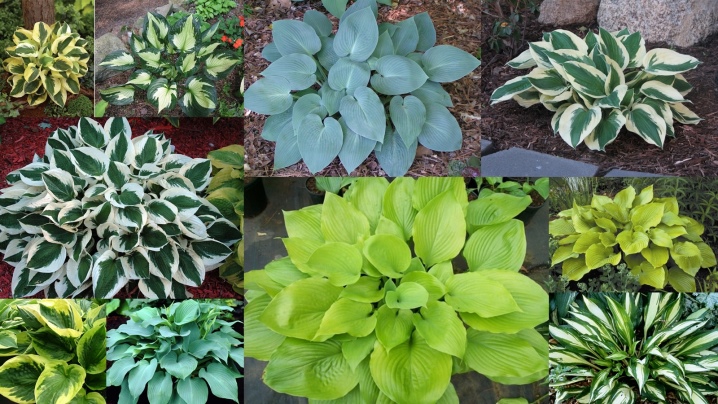
Description of hosts
The homeland of this culture is considered to be the Asian regions - Japan, Korea and China. In their natural environment, the host species choose areas for themselves on the slopes of the mountains. In oriental culture, this plant is on a special account, therefore it is planted along significant buildings. Previously, the hostu was rooted along the coastline and pagodas. In light of the value of the culture, for a long period of time, the seeds and seedlings of the hosta were forbidden to be exported outside her homeland.
Hosta is a perennial that has found its use in gardens as an ornamental plant. Varieties are represented by cultures with different and even multi-colored colors of the aboveground part, which has a positive effect on the appearance of the host. Most often, you can find species and varieties with light green, blue, gray, yellow and even white color of green mass. There are striped or speckled variations. The sizes of foliage are also presented in a wide variety, in light of which, for rooting in the garden, you can choose a plant for every taste. These can be crops with a round or heart-shaped leaf, plants decorated with narrow leaves, long or small variations. The host sizes themselves also range from very small varieties and species to giant crops, which can reach a height of one and a half meters.
In some sources, you can find another name for the plant - funkiya. No less remarkable will be the history of the botanical classification of the hosts. Previously, the culture was ranked among several different genera - Liliaceae and even Asparagus, but today the plant has rightfully been singled out into a separate genus of the same name - Hostovye.

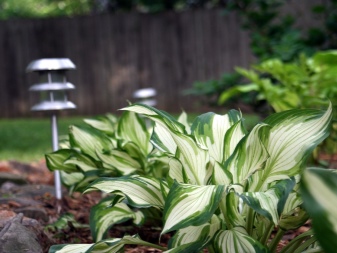
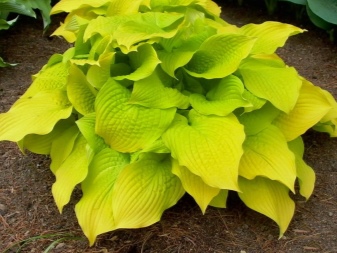
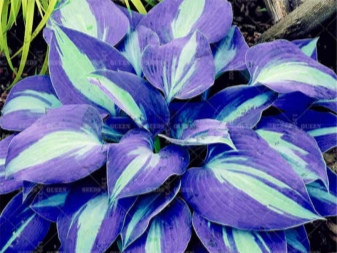
According to the development and appearance of host varieties, they can be attributed to rosette crops that develop in the form of dense bushes formed from basal leaves. On average, the height of a crop in an open field is 50 centimeters. But breeders at the moment have also bred dwarf crops, which are usually planted in compositions or pots... Their size, as a rule, does not exceed 5-10 centimeters.
The host root system is represented by filamentous branches that grow in different directions from the stem. The culture stands out not only for its beautiful and colorful green mass, but also for its ability to bloom. The flowers of the host have an external resemblance to bells, the inflorescences develop on the peduncles growing upward. Flowering crops can be adorned with flowers ranging from white blossoms to deep purples. Plants enter the flowering phase from July to August. In the open field, hosts will need pollinating insects. When growing a hosta at home, pollination is carried out manually. In the case of successful work, in 3-4 weeks the culture will begin to form seeds that develop in a special brown box.
The diameter of the leaves of the plant varies between 20-100 centimeters. The surface of the green mass can also be glossy, matte, grooved, with a metallic sheen or waxy coating. Complemented by unusual colors, such crops become a real decoration in the garden.

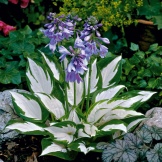
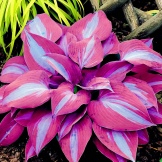

When planning the cultivation of a host at home or in the open field, it is worth knowing about the features of this type of crop, which relate to a weakly pronounced toxic effect. For humans, the plant is not dangerous, however, when pets eat green mass, there is a high probability that animals will have problems with the digestive system.
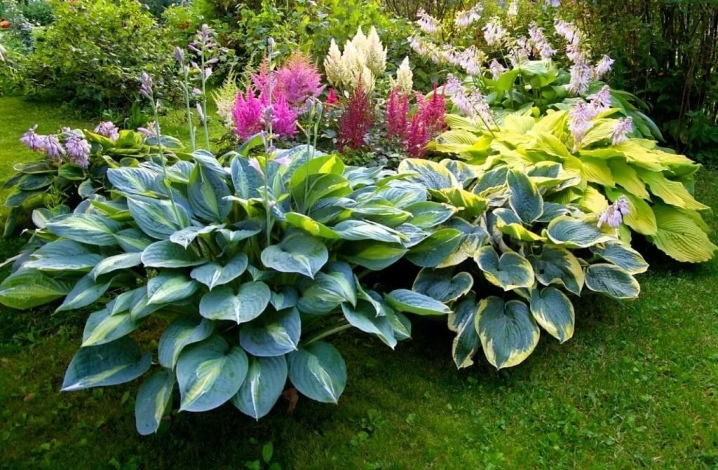
Florists and gardeners distinguish the following features of this culture.
- Today, the culture is represented by a large number of wild varieties and species, as well as hybrids, which are the result of the labor of breeders. Such a variety makes it possible to cross the varieties you like with each other, resulting in new, unusual and very attractive perennials for decorating the garden.
- The culture is notable for its undemandingness in terms of choosing a place for rooting. As a rule, most of the host takes root rather quickly in the open field, and also easily adapts to new conditions after transplanting.
- Hosta is a perennial that can be successfully grown in one place without regular transplanting for 10-30 years.
- The host is distinguished by excellent immunity to many ailments, in addition, insect pests rarely attack the culture. This moment greatly facilitates the agricultural technology of the plant.
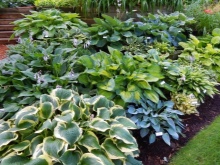
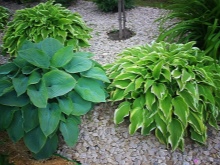
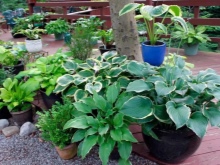
The culture grows well next to other garden plants. This moment allows you to create beautiful compositions in the open field, actively using different types and varieties of host.
Classification
Today, the plant is divided into several groups, taking into account the various external characteristics of the wild and hybrid species represented. First of all, the gradation of plants concerns their size. So, according to the American host classification, the following groups of plants are distinguished:
- dwarfs - hosts, whose height usually does not exceed 10 centimeters;
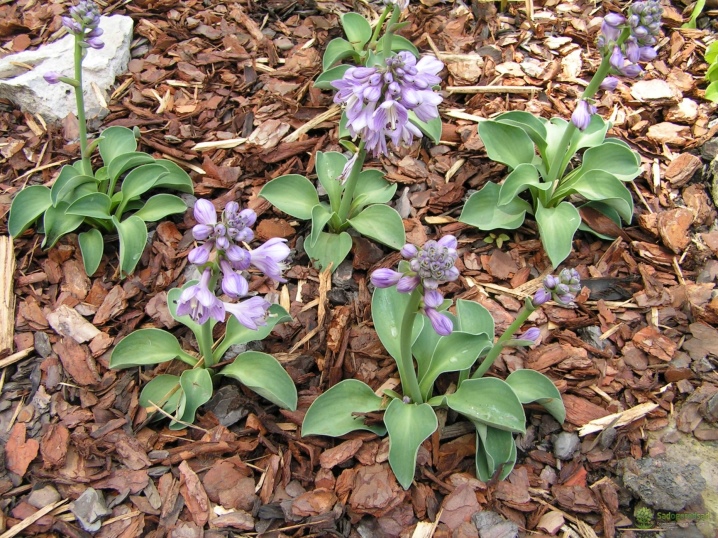
- miniatures - varieties that can grow up to 10-15 centimeters;

- small crops - this group includes plants that do not exceed 25 centimeters in size;
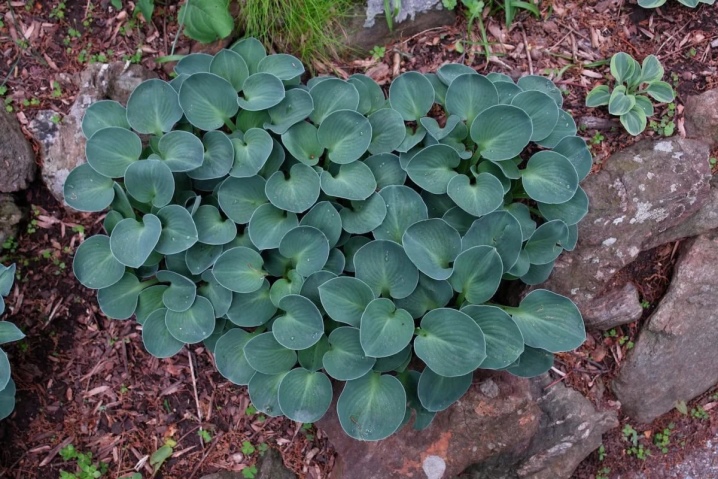
- medium - this includes plants whose height will be about half a meter;

- large - hosts with a height of 55 to 70 centimeters;

- gigantic - crops whose height indicators exceed 70 centimeters.
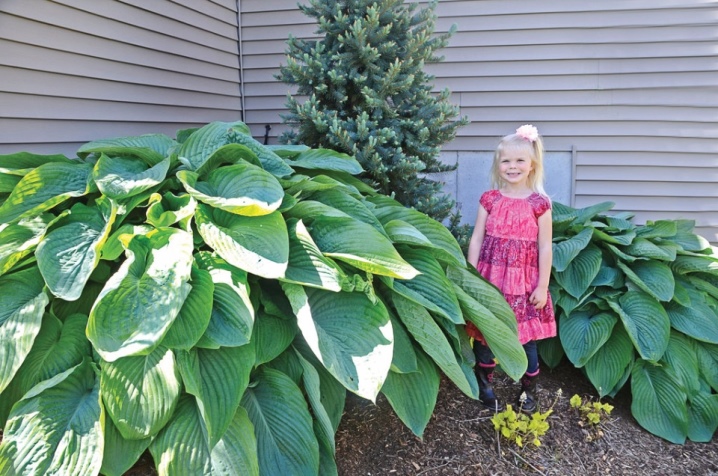
Despite the fact that scientists have carried out a clear classification of the host, there are also plants that are classified as intermediate groups.
In addition to the size of the bushes, the following external features are taken into account when classifying:
- leaf shape - it can be round, oval, narrow or heart-shaped;


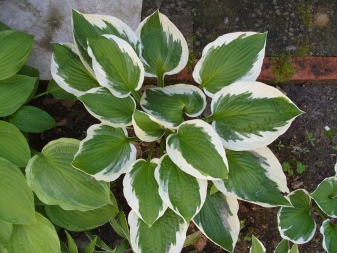
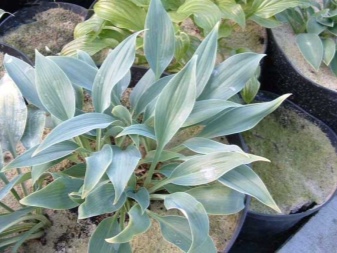
- type of sheet surface - corrugated, matte, glossy, wavy, bronze-metallic, etc.;
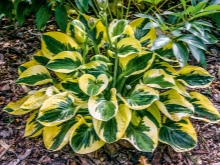


- the color of the green mass - in this case, the hosta is presented in a huge variety, which is regularly replenished with new varieties.
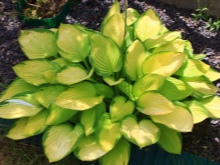

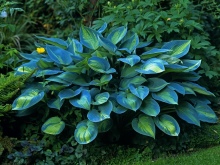
What types are there?
The host includes a large number of species, among which it is worth highlighting the most popular options for growing in the open field.
White-bordered
A hybrid from Japan that grows green mass in the form of medium-sized broad-lanceolate leaves. The color of the crop will be in rich green tones, and there is also a white edging on the leaves, which increases the attractiveness of the plant. The species blooms with small flowers, the perianth will have a purple color with dark lines. The plant enters the flowering phase closer to mid-summer, while the bush retains the freshness of its inflorescences until late autumn. The species has the property of fruiting.

Bloated
A dark green hosta with shiny leaves, the bract is broad, heart-shaped. The flowering of the species provides for the development of flowers on an erect peduncle. The color of the flowers will be lilac. Among the varieties of this species, there are cultures that bloom in lilac color. The green mass will have small waves.
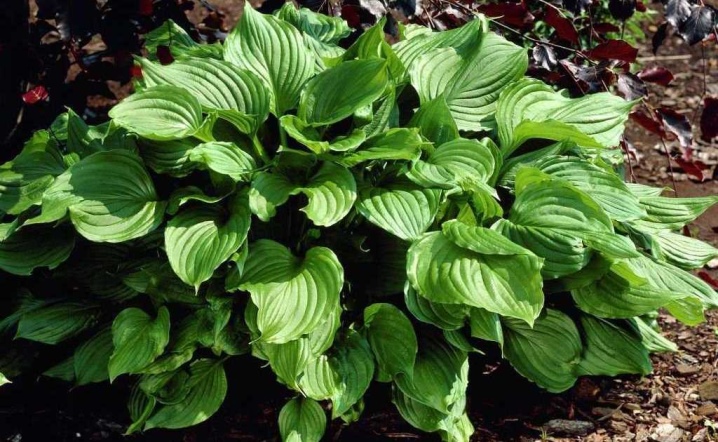
Ovoid
A species whose homeland is considered to be the countries of the Far East. Outwardly, the perennial is notable for its round shape of the bushes, the leaves will be ovoid, painted green. In the flowering phase, the host throws up a peduncle, which can reach 50 centimeters in height. Flowering in the culture begins in the summer, while the flowers are painted in lilac-blue shades, the shape of the inflorescence will be racemose. Among the varieties belonging to this species, it is worth highlighting plants with a rough surface of green mass, which will be additionally decorated with yellow stripes.
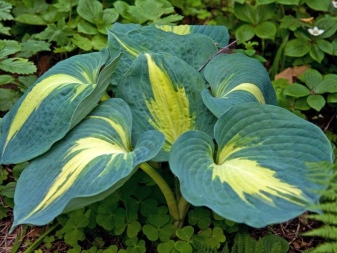
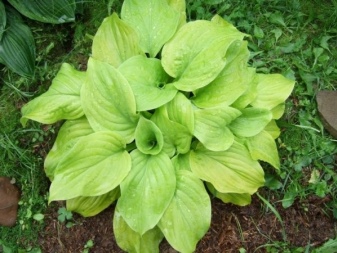
Wavy
Another hybrid hosta variety obtained by breeding in Japan. The bract of the plant has an oblong ovoid shape with a strong wave, in the center there are white blotches that can occur along the entire length. Flowers in the culture develop in a bell-shaped shape, their color will be predominantly purple in light shades. Flowering occurs in mid-summer. The varieties of this type of hosta are represented by crops with green foliage, the presence of a white stripe or a light middle.
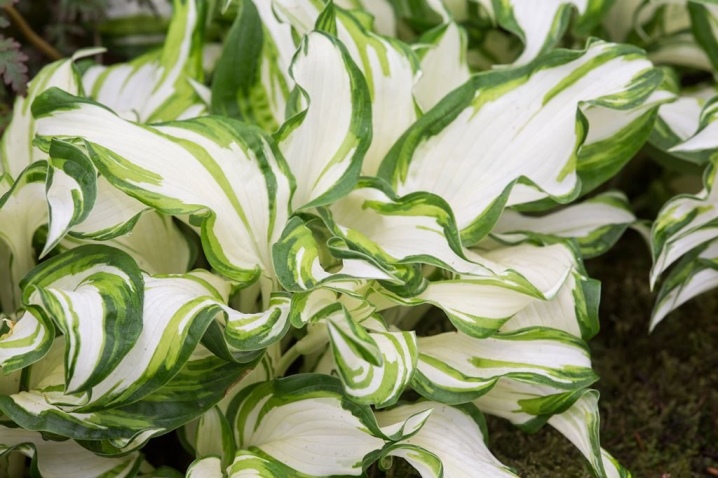
Siebold
The bract in the hosta will have a combined heart-ovoid shape. Also, the green mass of the hosta has a waxy coating on the surface. Flowering involves the development of white or pale lilac flowers on the peduncle. Quite a popular type of culture among gardeners, varieties and varieties can have a gray or blue color of leaves, a bluish green mass. The culture very often acts as a mother plant in the course of breeding work to obtain new perennial varieties.
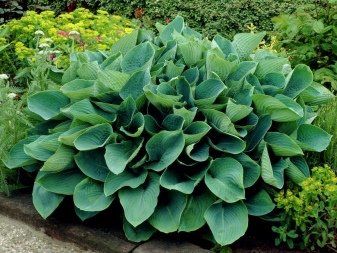
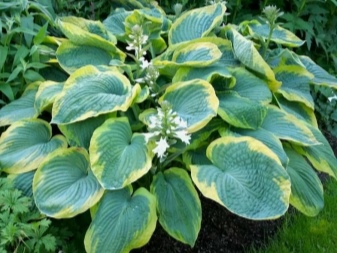
Fortune
A species obtained by artificial means, outwardly, the plant has some similarities with the previous variety, but the hosta Fortune is smaller in size. The bract develops with a waxy coating on the surface, heart-shaped. In the flowering phase of the culture, a large number of funnel-shaped bells, painted in purple shades, are formed on the peduncle. The species blooms in the last months of summer, and includes several varieties that differ in leaf color and bract size.
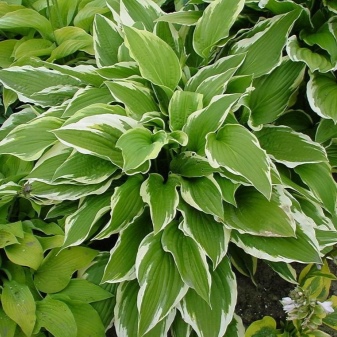
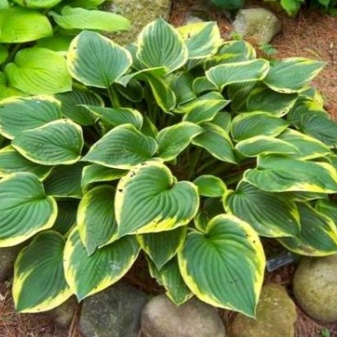
Beautiful
The birthplace of culture is Japan, but the species received the maximum distribution in Europe. This is another artificially bred hosta variety that has an ovoid leaf structure with a wave along the edge. The green mass will be a standard saturated color with a white stripe around the edge. The inflorescence includes from 30 to 40 flowers, their color will be in purple tones. The bush develops at a slow pace, however, in the process of growth, it forms rather dense thickets in the open field. Flowering occurs in the summer months, and continues until the onset of cold weather.
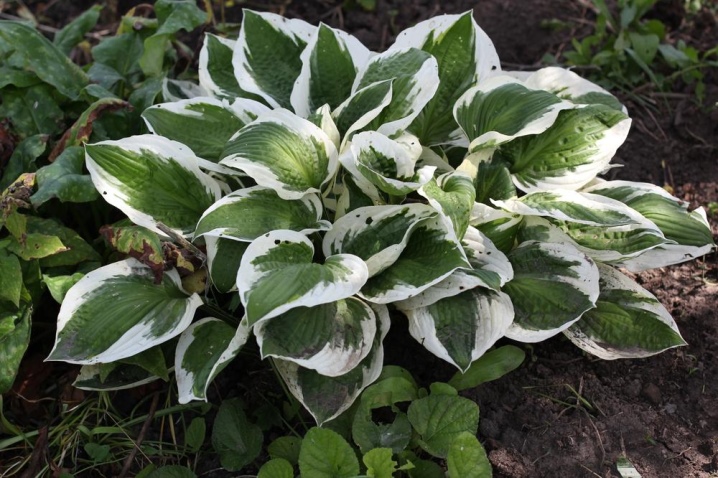
Curly
Hosta is of Asian origin, with foliage reaching a length of 15-16 centimeters. The shape of the leaf will be ovoid-heart-shaped, while the edge is slightly pointed and curled. A notable feature of the green mass is the difference in the color of the outer and inner sides - the top of the leaf will be green and matte, when the lower part has a glossy surface, complemented by a white stripe along the edge. The flower stalks of the culture are long and thin, due to their size they are clearly visible in dense foliage. In inflorescences, from 30 to 40 flowers are formed, usually their length is 4-5 centimeters. The flower petals are painted lilac, the surface is shiny, while the anthers will be yellow. The culture grows slowly, entering the host's flowering phase at the end of summer.
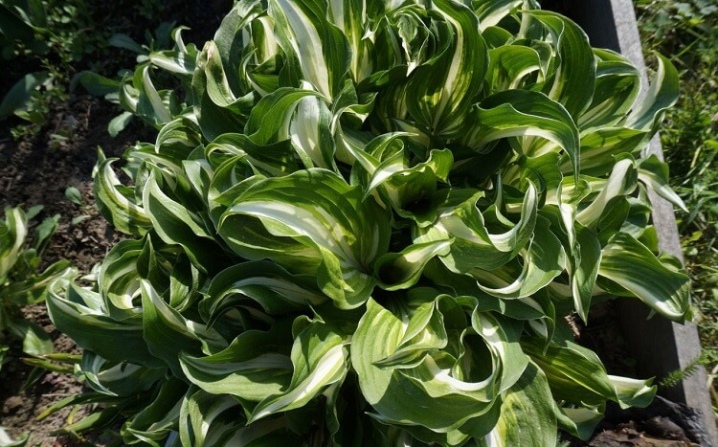
Lanceolate
The bract in the culture is lanceolate-ovate, the color of the green mass is saturated, there are brown blotches on the surface. The flowering will be medium in abundance, the color of the bells will be purple, there are dark stripes in it. This species blooms later than all the others, but the plant pleases with its attractiveness until late autumn.
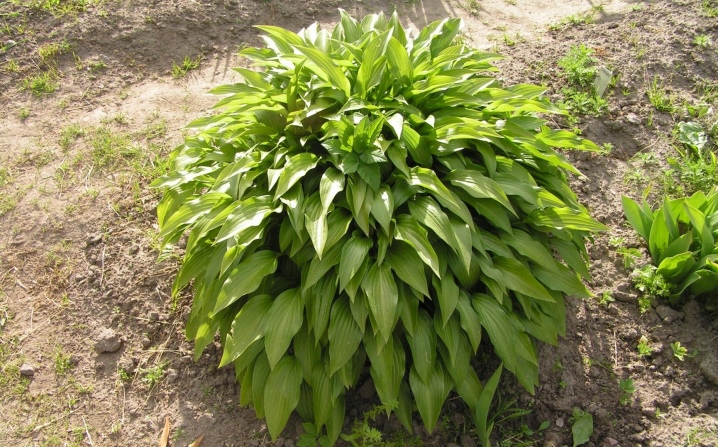
Plantain
In the wild, the culture is found in China and Japan. The green mass is ovoid and the leaves develop with an attractive shiny surface. The flowering is quite dense, falls in the middle of summer. The hosta bells will be painted white; during the flowering phase, the plant emits an unobtrusive aroma.
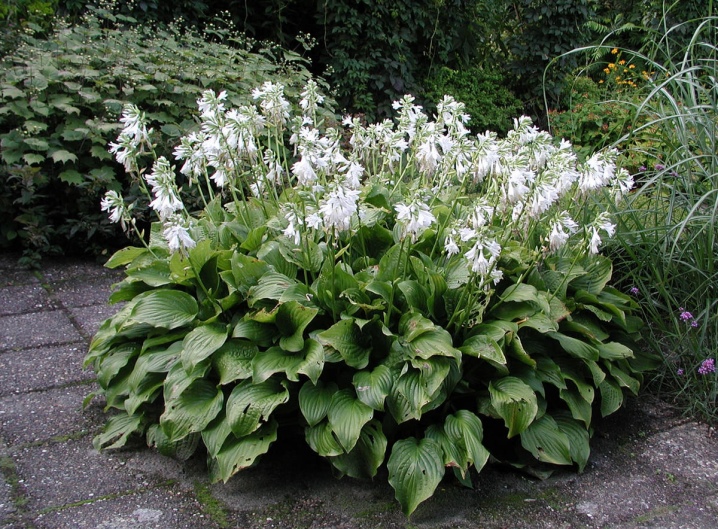
Straight-leaved
The plant is mostly found in the eastern part of Asia. Khosta forms a dense shrub, foliage grows vertically from the ground, dark green tones are present in the color. Purple flowers develop on peduncles. Flowering continues throughout the summer.
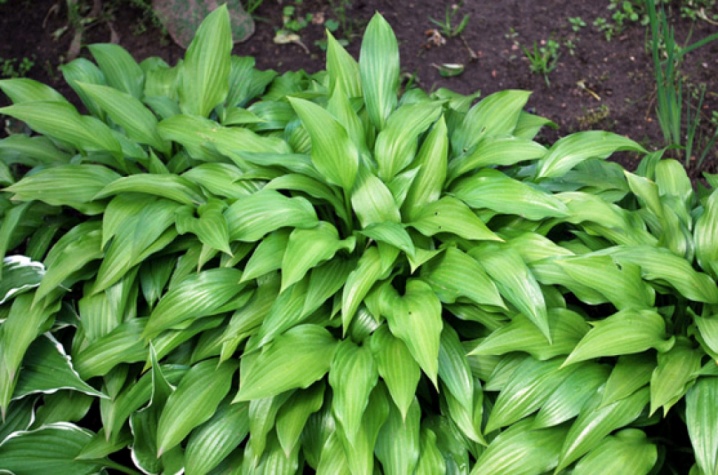
Varietal variety
The culture is represented by a huge number of varieties. Among the available variety, it is worth highlighting the most demanded ones.
"Cherry berry"
A very beautiful plant that is in demand among gardeners due to the combination of several shades in color. The predominant colors will be green and milky, making the hosta the centerpiece of the entire garden. The variety reaches 25 centimeters in size, very often acts as a component of the composition in the garden. The crop can be planted in partial shade or in full sun.
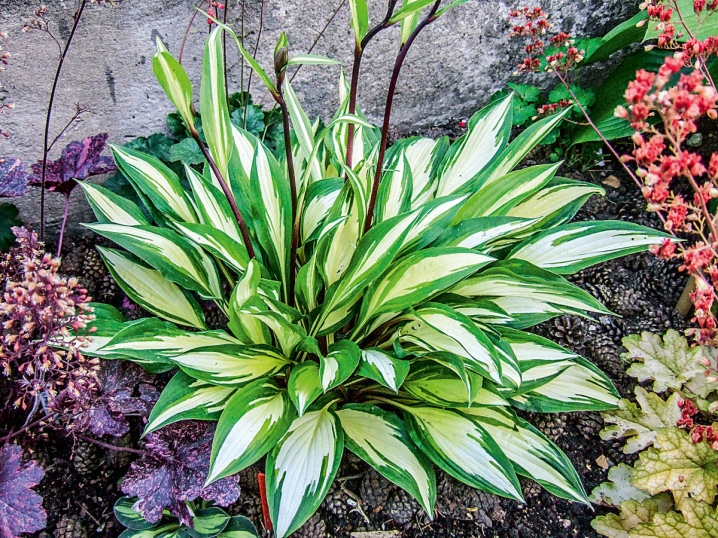
"Albopicta"
A variety represented by a dome-shaped plant, which attracts attention with its yellow leaves, collected in a dense "hat". Usually, the host of this variety does not stretch in size by more than 70 centimeters, however, the growth and development rates of the plant will be quite active... Depending on the site for planting, the host can change the color of its leaves. The variety belongs to frost-resistant varieties that do not lose their viability even when the temperature drops to -30 degrees.
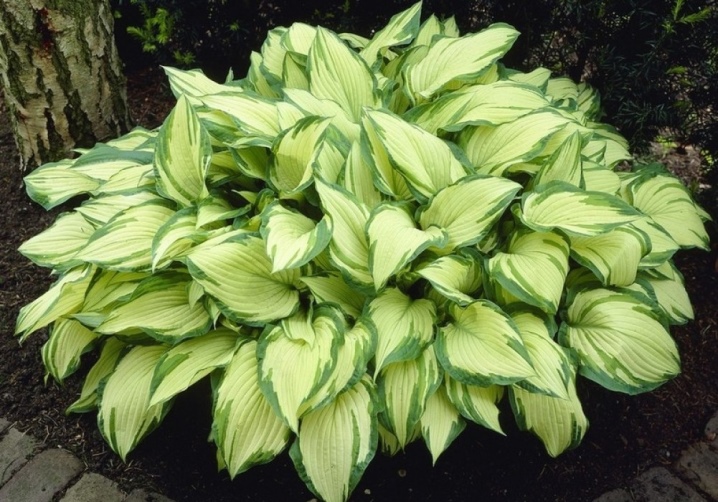
"Big Daddy"
Despite its name, the bush has an average size, which usually does not exceed 60 centimeters. The culture is quite in demand among gardeners, very often it is planted in group beds, near water bodies, in rock gardens. The variety has a bluish-colored foliage, on the surface of which corrugation is clearly visualized. The culture is very fond of moisture, has good immunity, as well as resistance to negative temperatures.
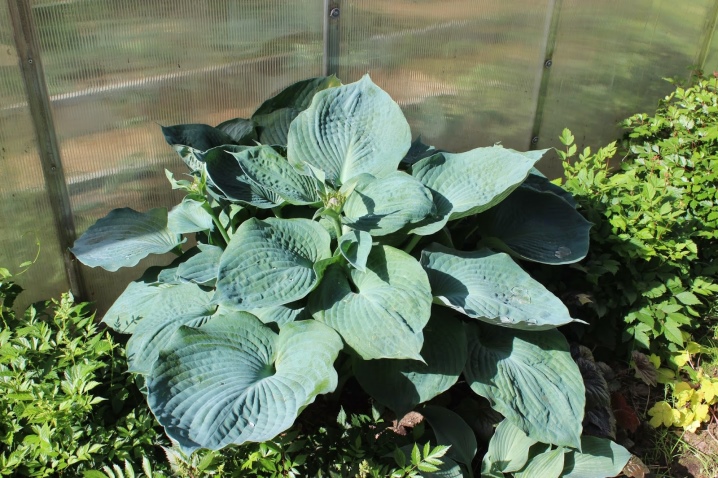
"Blue Angel"
Some plants can grow up to 1 meter. The leaf plate develops up to 30-40 centimeters, the surface will be corrugated. A large bush blooms with flowers resembling hyacinth, in addition to the external attractiveness of the host of this variety, it emits a pleasant aroma during flowering.
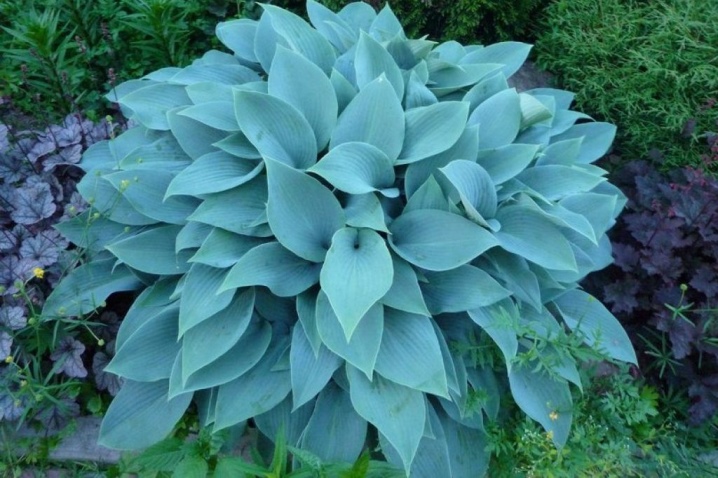
"Holcedony"
Medium-sized bush, develops with dense blue foliage. The shape of the leaf resembles a heart.

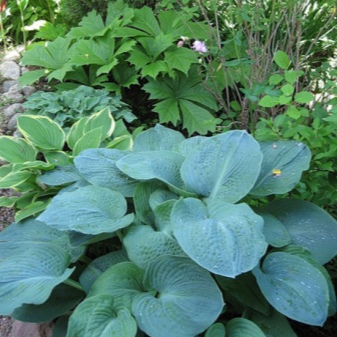
June
A plant that can change the color of its leaves. Changes are associated with climatic features and seasonality. Typically, the plant will be yellow in summer, with a dark streak around the edge usually present on the leaves. With the arrival of autumn, the culture in the garden acquires a blue color, while the middle of the leaf remains in light shades of greenery. The variety develops up to a half-meter mark, the width of the plant is about a meter. The plant is resistant to frost, it is not attacked by slugs and other pests.
In order to preserve the decorative attractiveness of such a hosta as much as possible, it is recommended to grow it in the shade, since it loses the saturation of its colors from sunlight.
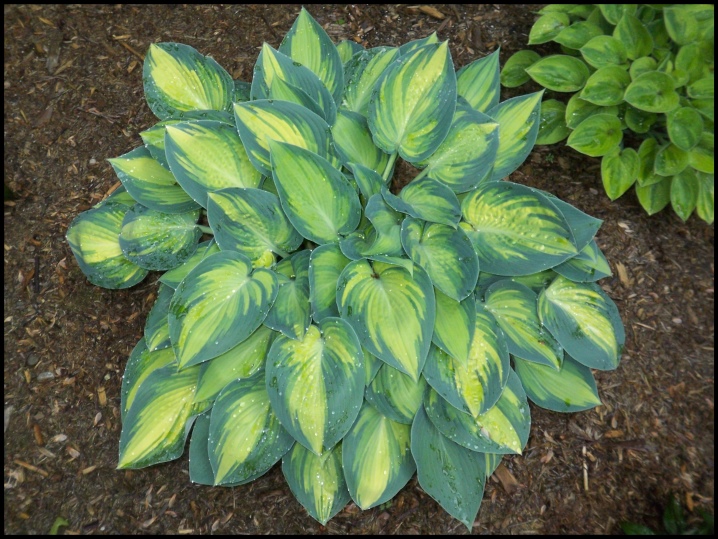
"Patriot"
A popular culture among most gardeners. The hosta grows wide dark green foliage with a wavy edge. A light strip runs along the edge of each. As a rule, an adult plant develops up to 60-70 centimeters in height, while the width of the bush in the open field in some cases exceeds 120 centimeters.The variety is remarkable not only for its decorative beauty in single plantings or in group plantings, but also due to its resistance to many diseases, frost resistance.
The culture develops best in moist and fertile soil.
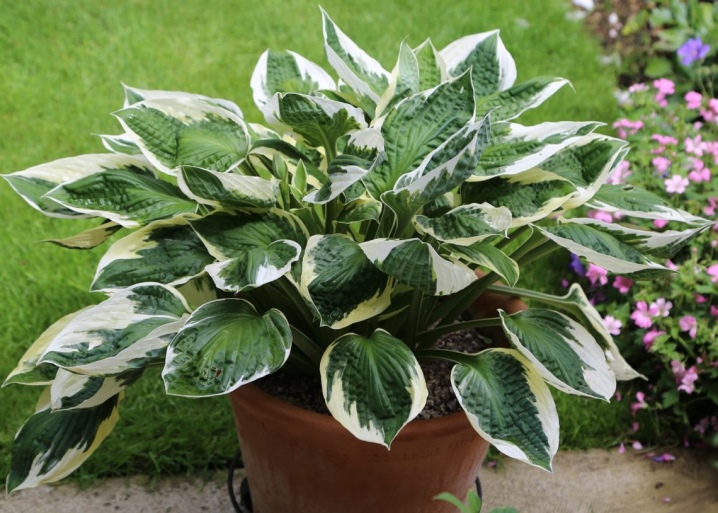
"White feathers"
A beautiful hosta, in demand for creating compositions in the garden in the light of the unusual color of the leaves. Initially, the green mass is white, but over time, the culture turns green.
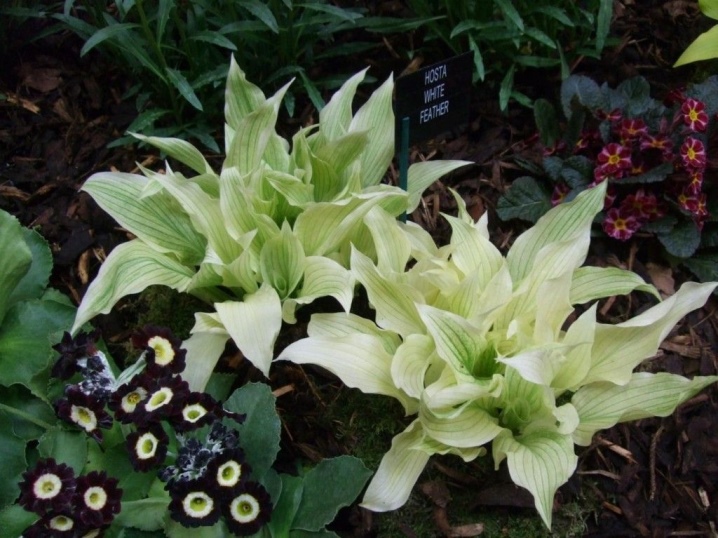
"Media Variety"
A popular hosta variety that is in demand due to the attractiveness of its leaves. The green mass grows with a white stripe in the middle, the foliage itself has an attractive wave.
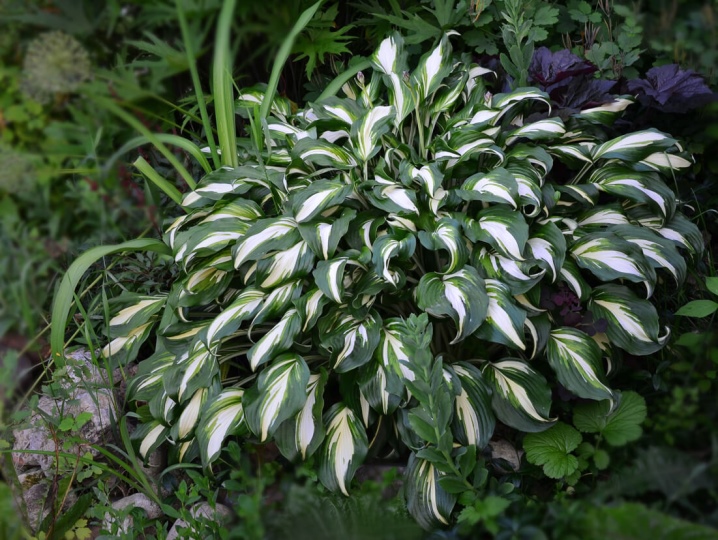
"Aureomarginata"
Variety related to yellow hosts. The bush develops well in height. In the open field, the plant can grow up to one meter, but the culture grows not only in height, but also increases in diameter. Adult plants of this variety can grow up to one and a half meters.
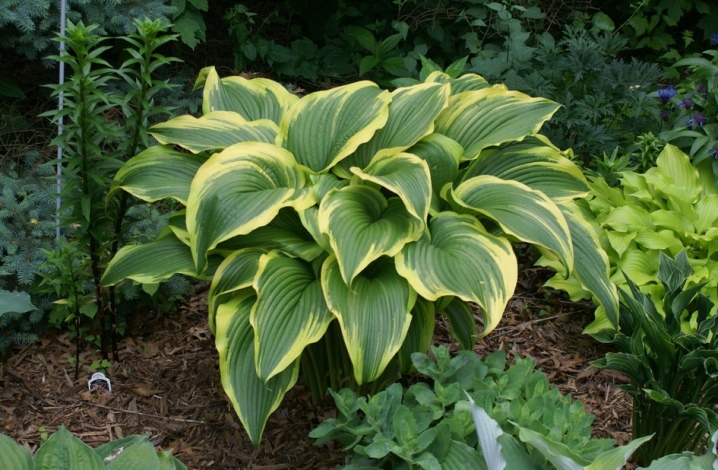
"Fest mate"
A plant with an elongated leaf shape. The green mass will be wavy. This option will be most successful for planting in small front gardens, since the culture does not stand out for its large size. Usually, the height of the hosts rarely exceeds 20-30 centimeters... The color of the green mass makes it possible to classify the crop as yellow hosts. The sheets will have a yellow center and a wide strip of emerald color around the edges.
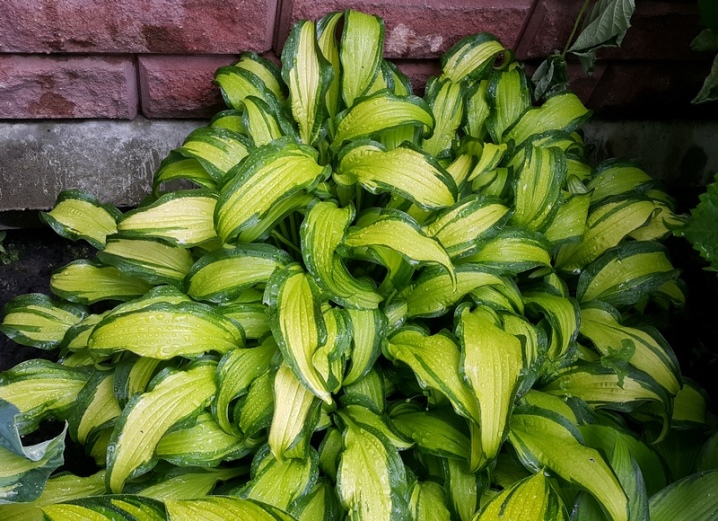
"Brim Cap"
A medium-sized bush, the height and width of which will be in the same range - 40-45 centimeters. The leaves are bowl-shaped with a relief surface. The variety is resistant to negative temperatures. Florists recommend rooting such a host in places where shade will prevail for the most part of the day.
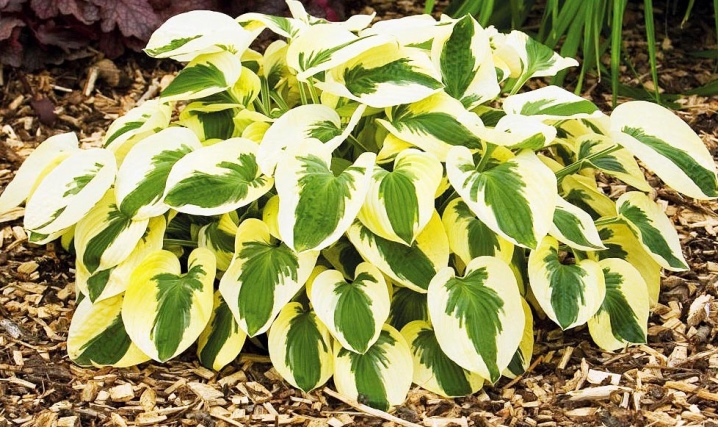
Golden Meadows
An attractive plant with corrugated foliage. Due to its hard surface, the crop is not of interest to slugs and most other pests. This plant should be classified as a large variety, since the hosta is capable of stretching more than 60 centimeters. During the summer, the plant changes the color of its leaves several times - from yellow to green.
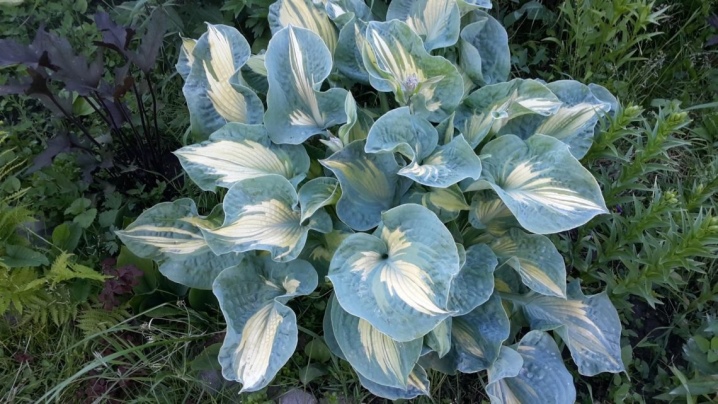
"Striptease"
A plant with a lanceolate foliage and a wavy edge. The color of the plant is deep green with a wide stripe of white that divides each leaf into 2 parts. The culture reaches a height of 60-65 centimeters with a similar width.
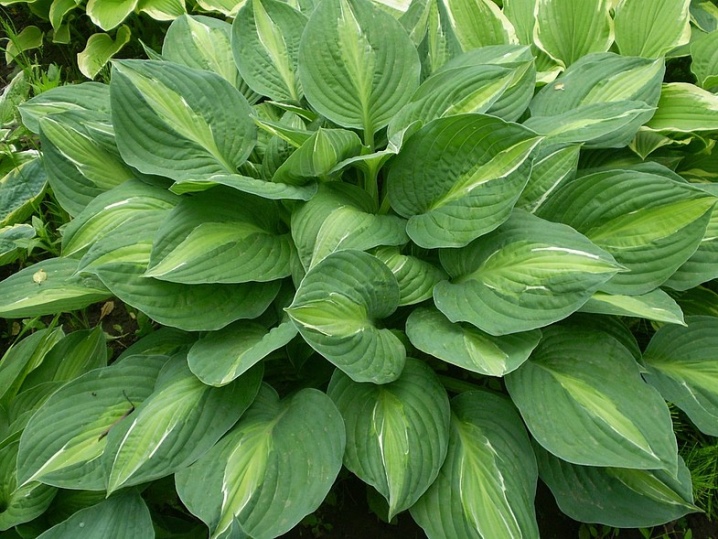
"Stiletto"
A hybrid culture, which belongs to miniature varieties, since it can grow in size only up to 30-35 centimeters. The leaves are elongated, with a wavy edge, a predominant green color with a white border around the edges. The variety is notable for its ability to quickly adapt after transplantation and actively develop.
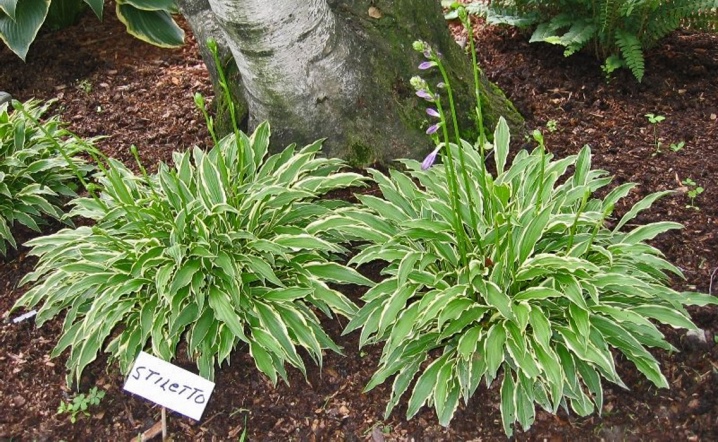
Gypsy Rose
A popular variety that stands out for its visual appeal. The color contains yellow and green shades, with a white edging. The culture enters the flowering phase in the middle of summer. The attractiveness of the culture during this period is complemented by lavender inflorescences.
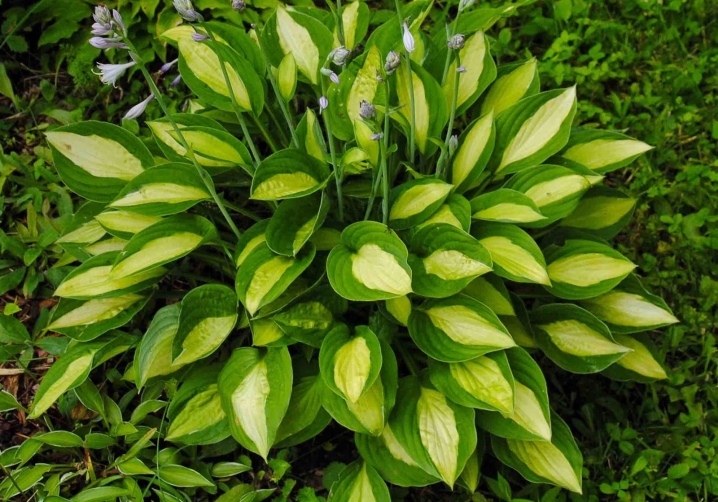
"Liberty"
The plant grows very quickly, so in just a few seasons it will be possible to grow a full-fledged bush about one meter high from a young hosta. The foliage of the culture has a rich green color with a yellow edging along the edge. During the growing season, the yellow color changes to white.
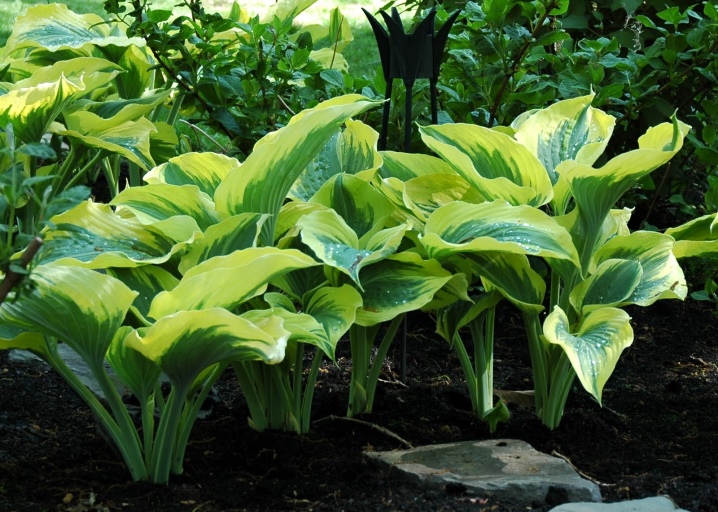
"Golden tiara"
The foliage is remarkable for its embossed surface. The color of the leaf plate will be green, there is a yellow stripe along the edges. This variety stands out for its ability to change color during development, as well as in light of the level of illumination of the place where the hosta was rooting.

"Grint Fontaine"
The plant develops to a mark of 50 centimeters, the leaf plate has an elongated shape, resembling feathers. At the same time, in the process of growth, the bush forms a semblance of a fountain of leaves falling from the very middle.

"InviSible"
Hosta with oblong leaves with a slightly wavy edge. The color of the culture will be bright green. The plant develops quite rapidly, the variety reaches 50-60 centimeters in height and width.
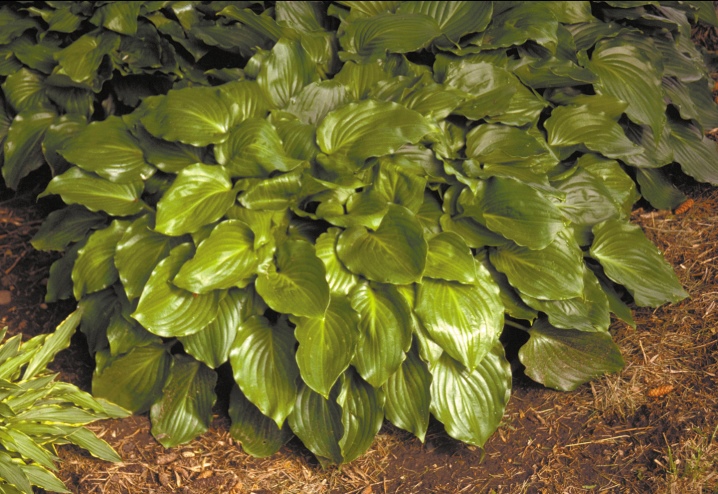
In addition to the above hosta varieties, the following new and already popular plant varieties are actively grown in the open field:
- Albomarginate;

- Atlantis;

- "Praying Hands";
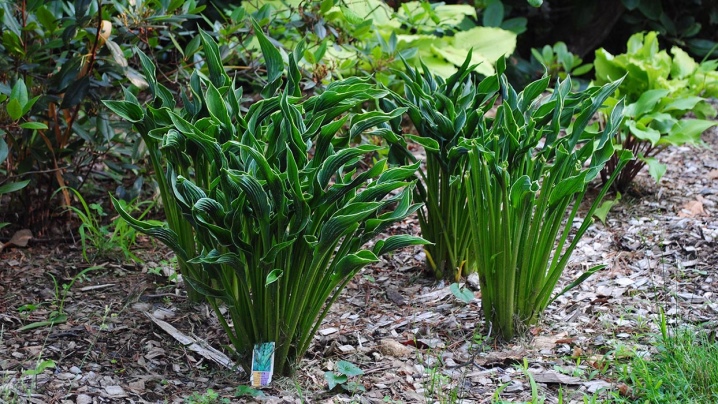
- Fire and Ice;
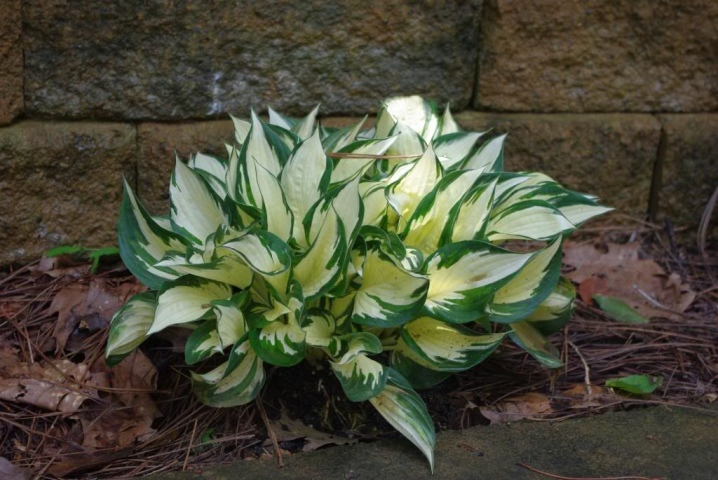
- Rainbow End;
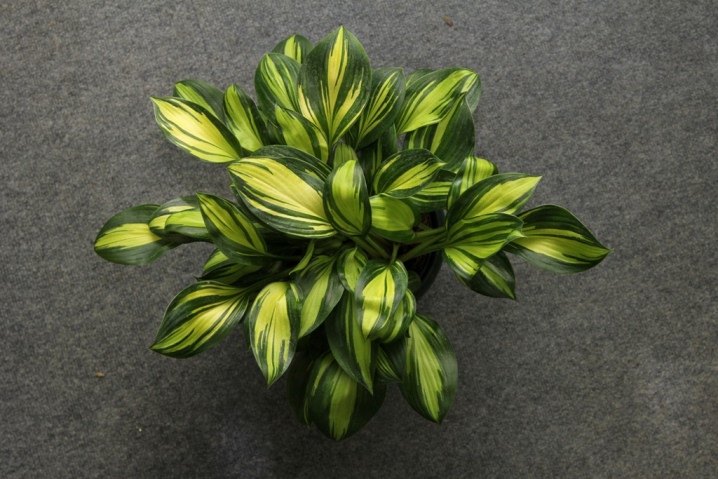
- Color Festival;
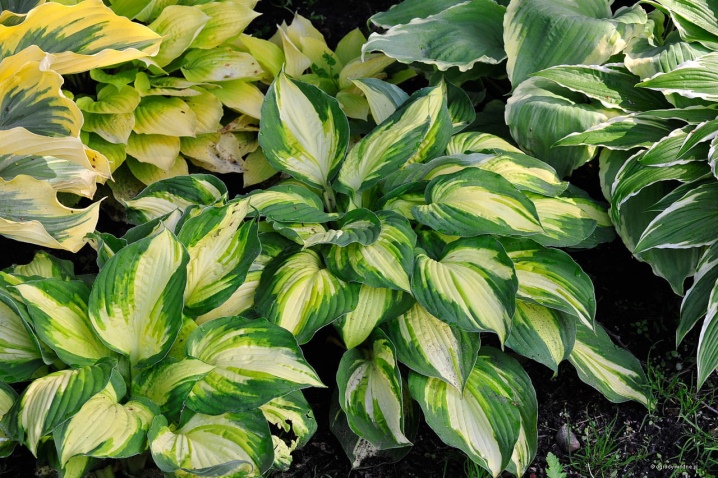
- "Katerina";
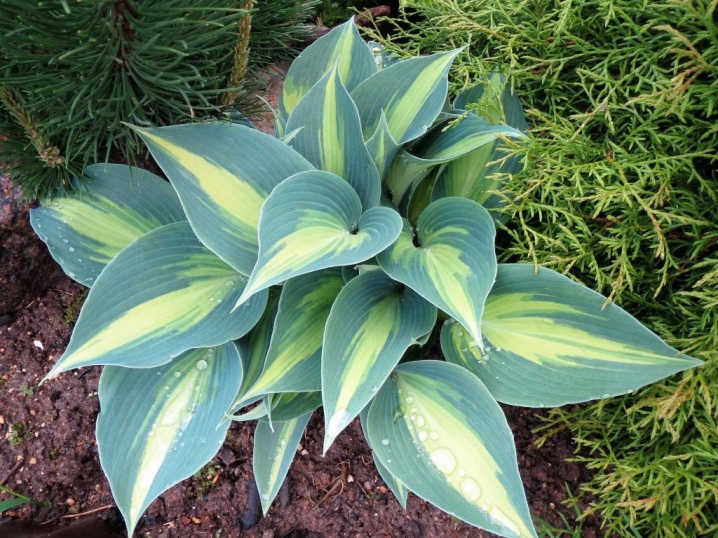
- Francis Williams;

- Regal Splendor;

- Dream Queen;

- Sam and Substens;
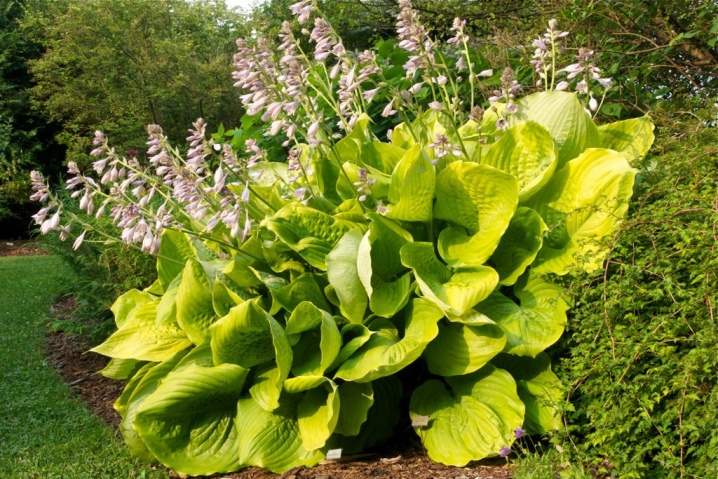
- Robert Frost;
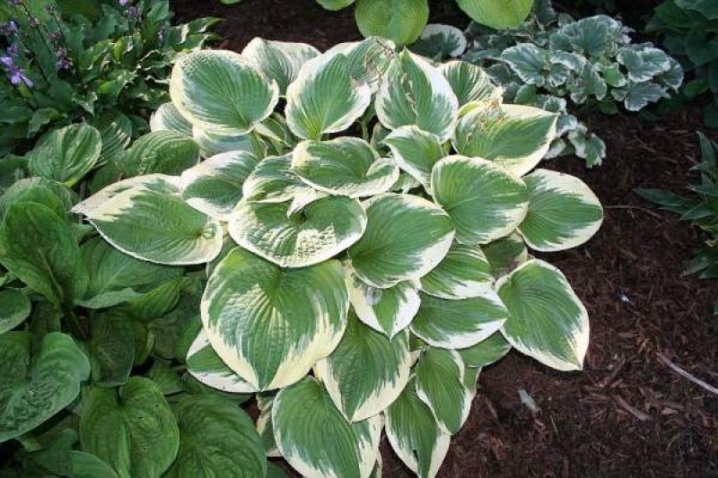
- Mama Mia;
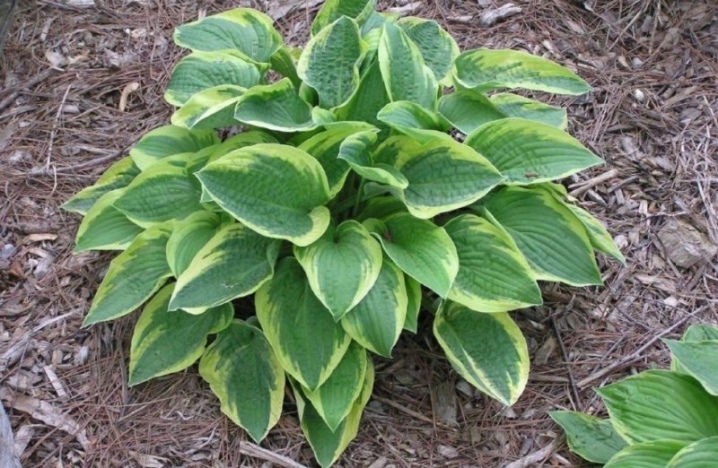
- Steind Glass;
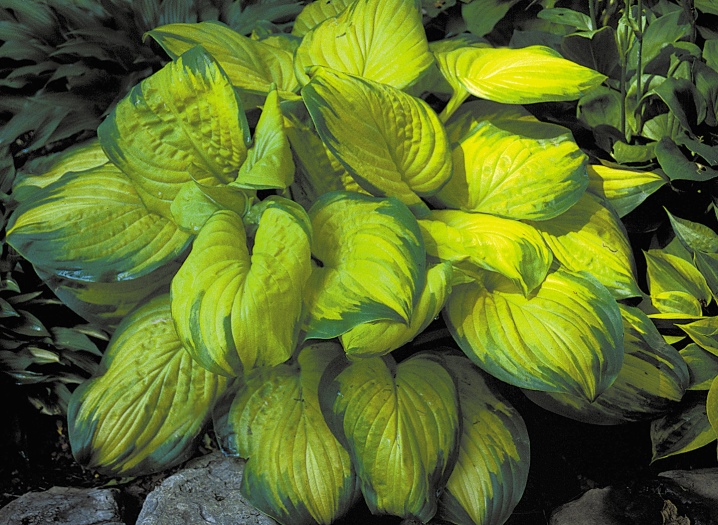
- Thunderbolt;

- Colored Hulk;
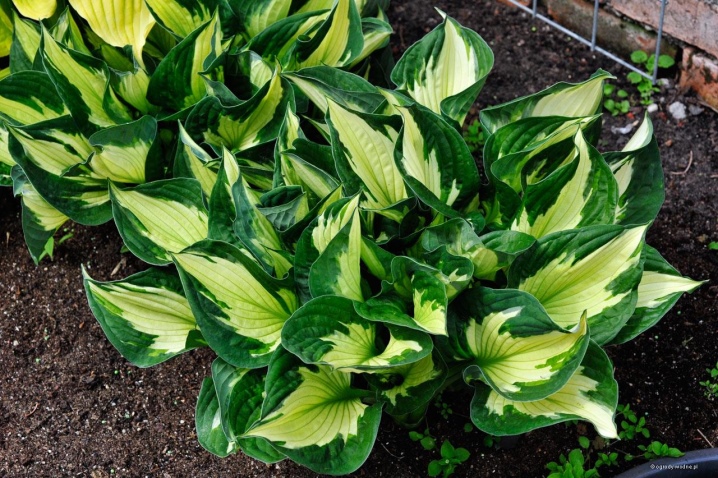
- El Niño;

- Sting;
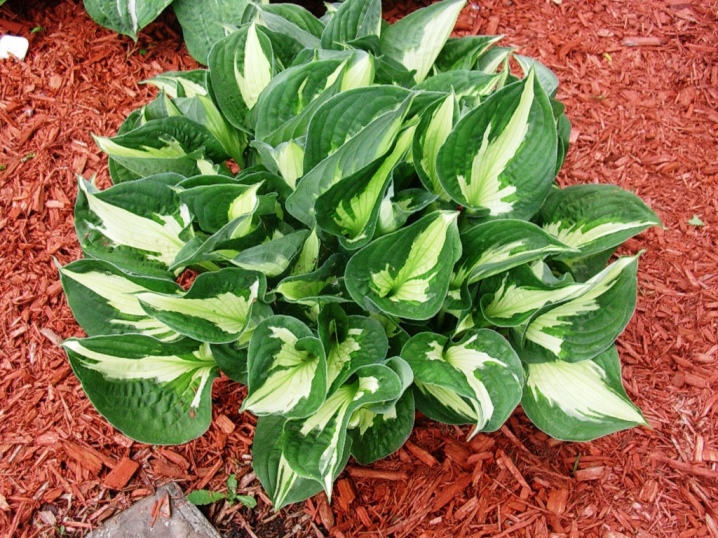
- "Revolution";
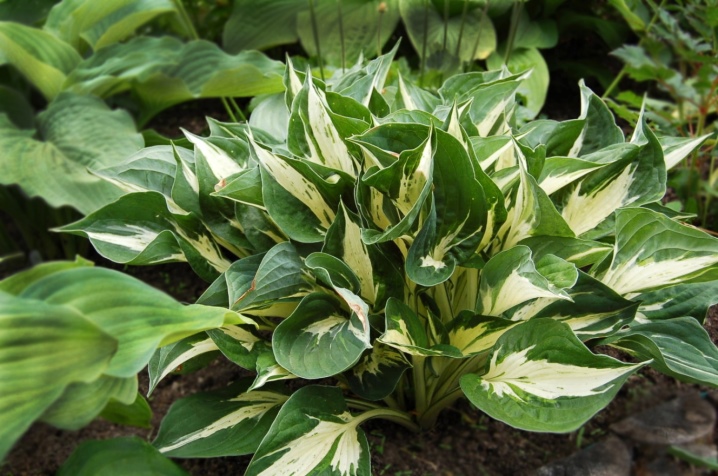
- Guacamole;
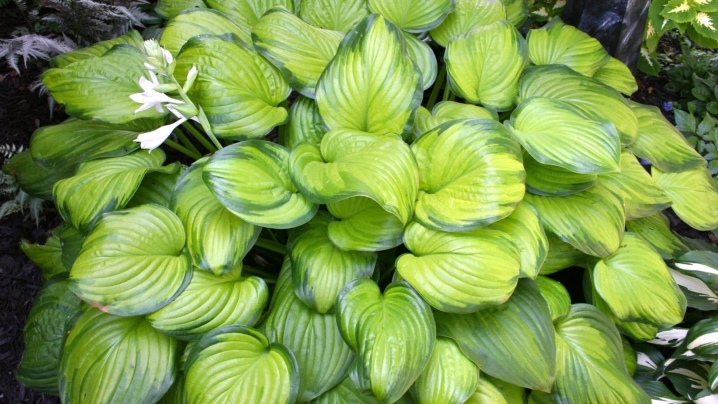
- "Neptune";
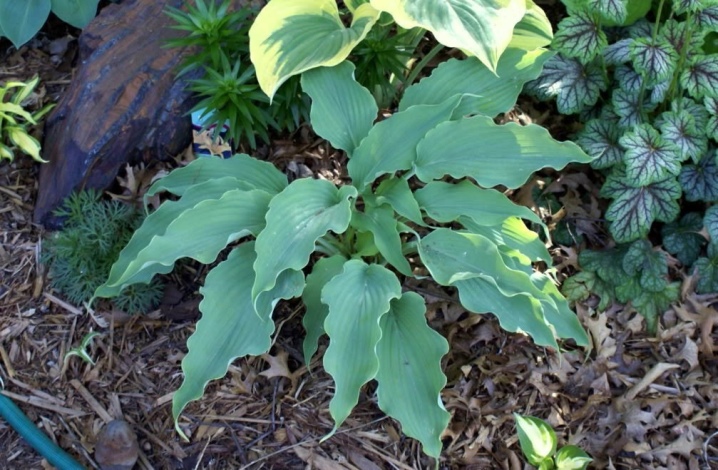
- Cross Regal;
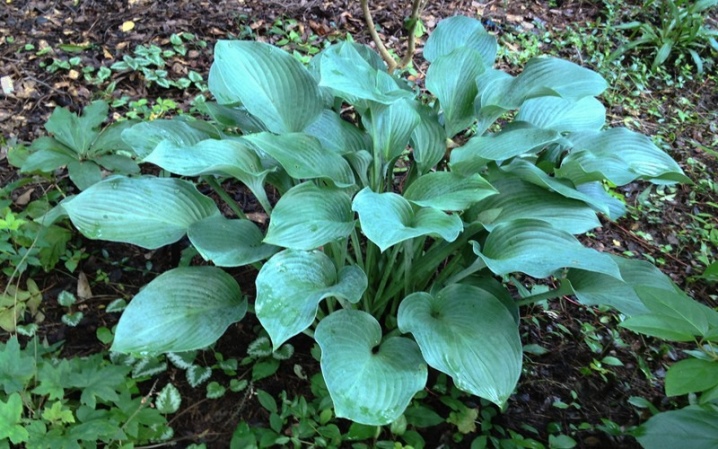
- Tokudama Flavocircinalis;
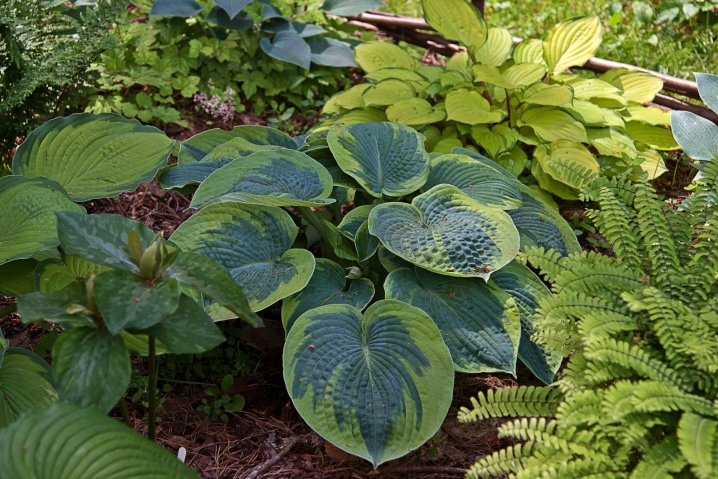
- Lakeside Dragonfly;
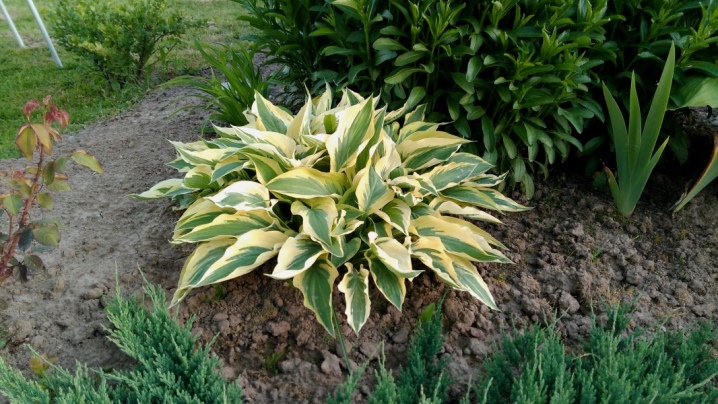
- Rainforest Sunrise;

- "Popcorn";
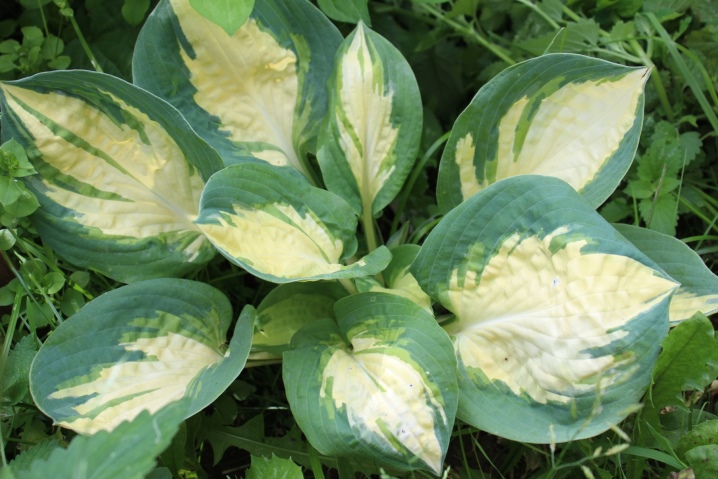
- Color Glory;

- Firn Line;
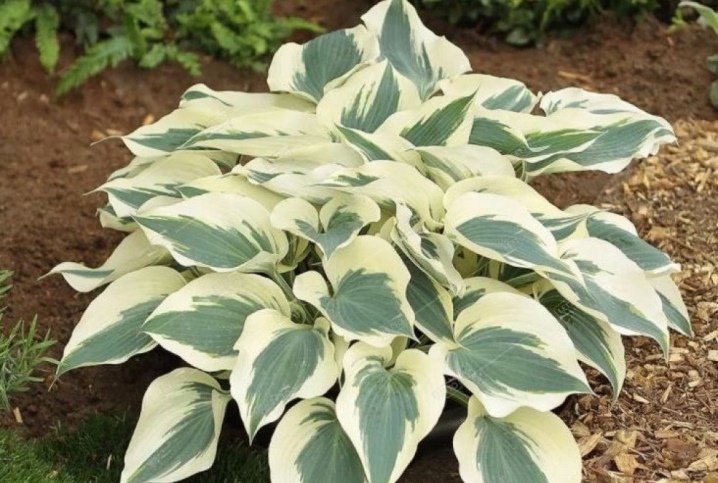
- "Paradigm";
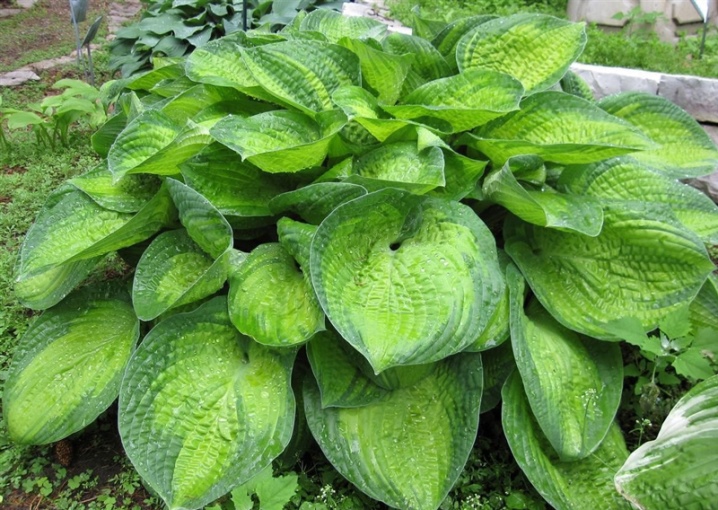
- American Halo;

- "Carnival";
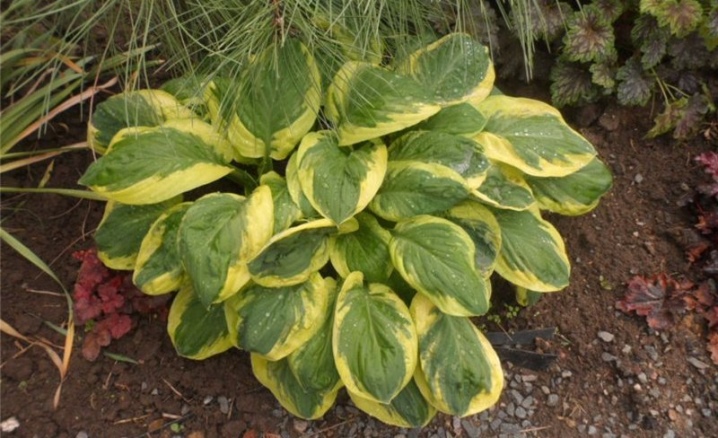
- Moon Split;
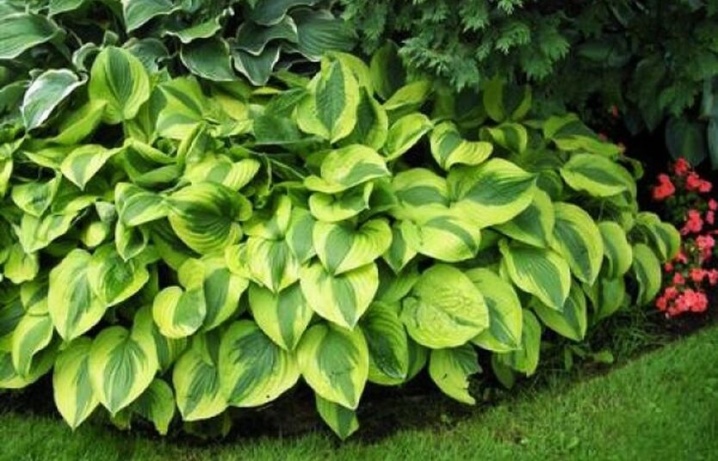
- Whirlwind.
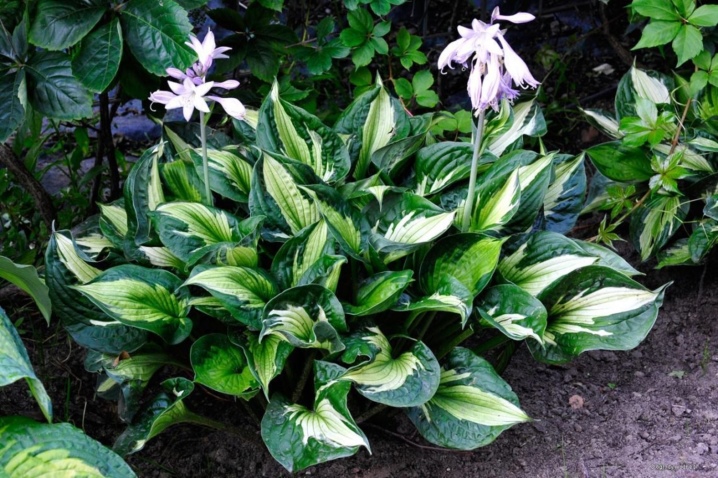
Selection Tips
Florists and gardeners, in the process of choosing hosts for the cultivation of a particular species or variety, first of all take into account personal preferences. but to get a really suitable plant for decorating the territory, you should adhere to the following recommendations.
- A novice or experienced florist, landscape designer should know that the adaptation process takes place fastest in tall and medium-sized host varieties. This is due to their resistance to external factors and immunity to many ailments.
- If you plan to plant dwarf or miniature hosts in the open field, then in terms of agricultural technology, you should prepare for the fact that plants may require the creation of certain conditions on the site, in addition, such crops are at times more likely to suffer from attacks of insect pests and various ailments. Small species and varieties are recommended to be purchased for growing in rose gardens. With the help of such plants, you can decorate slopes, create alpine slides, and they can also be used as a ground cover.
- As for the choice of a host for flowering flower beds, then any hosts of suitable color can be used for joint planting with hydrangea, spirea or astilba. The culture also develops well together with tall shrubs or trees.
- For planting in open areas, the host in pots, flowerpots or other containers is suitable only for low varieties. Such mobile flower beds can become a real decoration, which, if necessary, can be transferred to another part of the garden.
- Giant hosts should be considered for purchase only if there is enough space for culture in the garden.
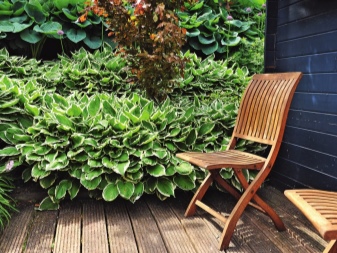
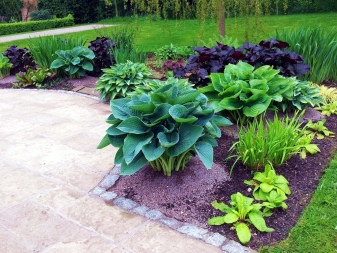
Before purchasing a plant you like, it is worth studying the features of the variety, taking into account the compatibility of the climate and the ability of the hosts to tolerate significant drops in temperature, drought or excess rainfall.
For the types and varieties of hosts, see the next video.







































































































The comment was sent successfully.